The best tablets under $500
The best tablets under $500 don’t feel as budget-friendly as they are, because they have good screens, great battery life and enough power under the hood to handle the latest games and apps.
While the cost of a new tablet can stretch up past $1,000 if you go for the latest and greatest, nowadays you have more choice than ever when searching for an excellent tablet under $500. You can get a brand-new iPad for less than that, but you also have a handful of excellent Android and Amazon Fire tablets to choose from that will serve you well for years to come.
To help you decide which tablet is right for you, we test all of the top devices in our lab and in the real world. In general, Amazon tablets are great for kids and anyone on a tight budget. iPads are best for students and creative pros, especially with the power of the M1 chip, and Samsung makes some excellent Android tablets that are just as good as any Apple slate.
Without further ado, here are the best tablets under $500 you can buy right now, based on our hands-on testing and review of all the top models.
What are the best tablets under $500?
The iPad is synonymous with tablets for a reason: when you buy the basic iPad, you’re guaranteed to get a great screen and strong audio for a starting price of ~$350. If you don’t plan on typing a lot, though, the $499 iPad mini is worth considering for its pint-size portability.
If you prefer Android, Samsung makes some of the best Android tablets on the market. The new Samsung Galaxy Tab S8 is a great premium Android tablet, with a great screen, excellent battery life, and speedy performance—all of which can be yours for under $500.
For parents or those on a tight budget, the Amazon Fire tablet line offers some great options. While their Amazon content-first interface may be off putting to those who don’t live in the Prime world, their prices can’t be beat and they’re quite capable Android tablets—as long as you don’t mind missing out on access to the Google Play Store and Google apps. For those who like to take lots of physical notes, the reMarkable 2 tablet is a one-of-a-kind slate that replicates the feel of pen and paper like no other.
You can also check out the Microsoft Surface Go 2, a great Windows tablet that can be yours for under $500. This is an excellent choice for anyone who might need the power of a full Windows PC in a tablet, since the Go 2 runs Windows 10 out of the box. Microsoft has since released a successor, but as you can read in our Microsoft Surface Go 3 review, it’s actually a bit of a step back—so stick with the Go 2.
The best tablets under $500 you can buy today
The basic iPad is Apple’s most affordable tablet, but that doesn’t mean it’s cheap. The A13 Bionic chip gives the 2021 iPad that necessary bump in performance to keep it speeding along, enabling iPadOS 15′ new machine learning tricks such as LiveText. The iPad’s screen is still bright and colorful, and just what it needs at this price point. Also, Apple’s sticking with its first-gen Pencil and Smart Keyboard Folio for its supported Apple-made accessories, which many may find easier to use than third-party Bluetooth options.
Sound is still good, as is battery life; the only thing we don’t like about the iPad is that the iPad mini and iPad Air are making it look even older than its design is. Added support for Apple’s finer accessories would be great, but it still has a headphone jack (no other iPad does), which is a win for the wired headphones crowd.
Read our full iPad 2021 review.
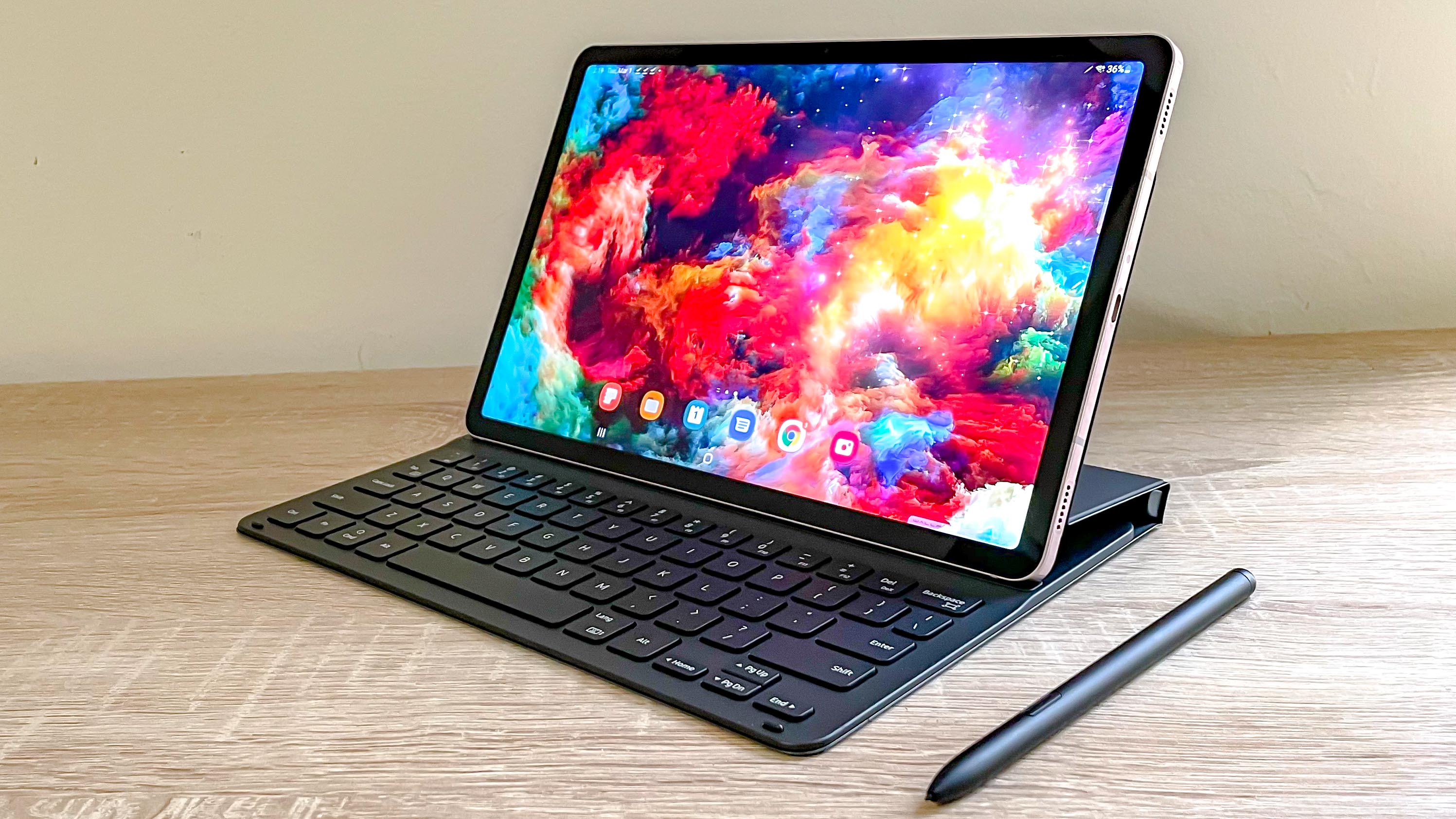
The Galaxy Tab S8 is good at a lot of things, but it’s best at being a premium Android tablet. You can use it to get work done in a pinch, but in my experience it’s best enjoyed as a speedy all-purpose device for making work and play a bit more enjoyable. It’s great on the couch for gaming or reading comics, and at work it’s nice to have as a note-keeping device or secondary display, especially if you go to the trouble of investing in the Galaxy ecosystem and making your workspace support Samsung’s DeX mode.
If you absolutely must have the biggest, baddest Android slate possible you probably want the Galaxy Tab S8 Ultra, but that will run you over $1,000. You don’t really need to pay that much for a great premium Android tablet, because the Galaxy Tab S8 delivers — and in the process, sets a new standard for what we should expect from the category.
Read our full Samsung Galaxy Tab S8 review.
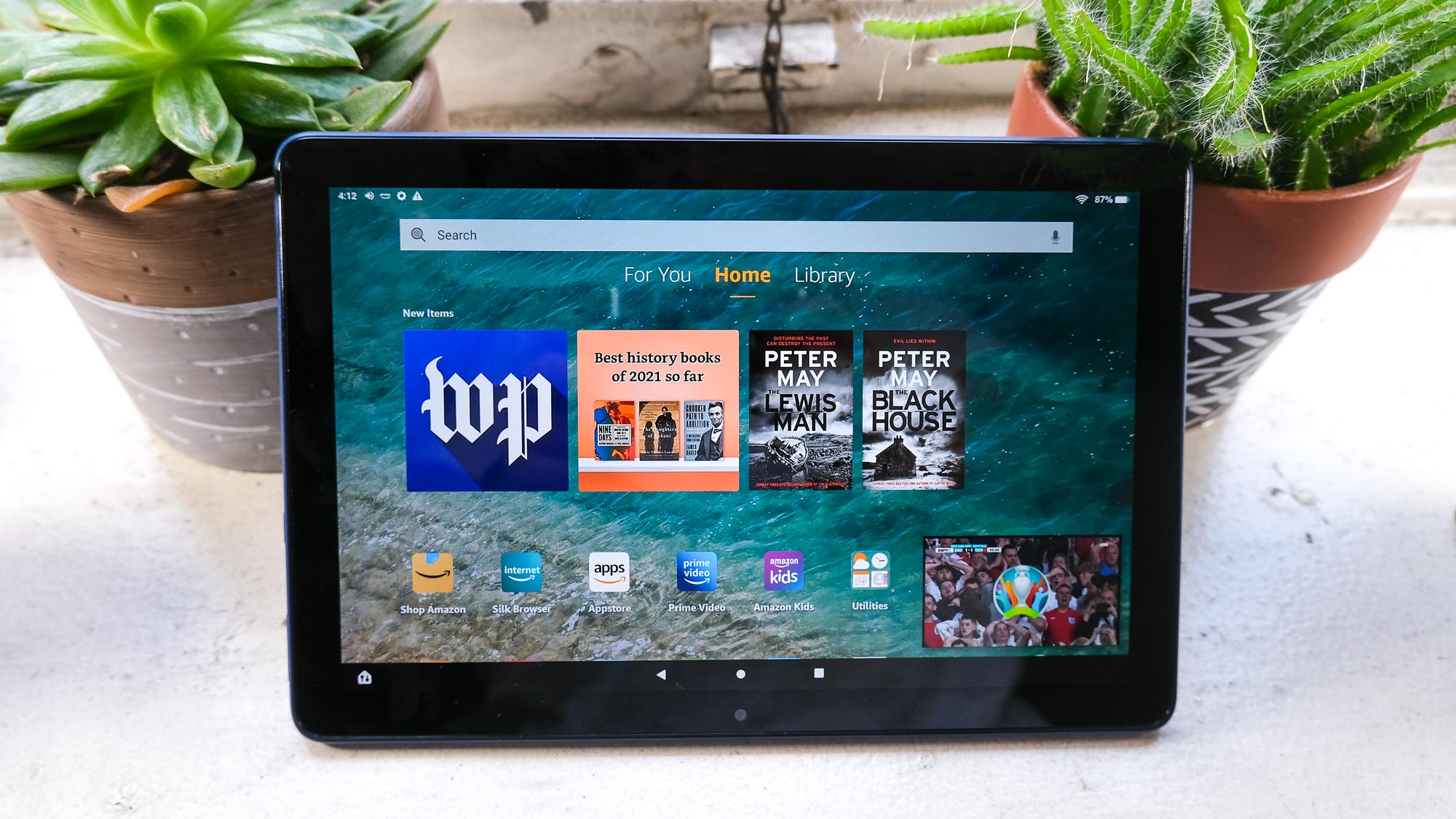
The Amazon Fire HD 10 (2021) takes an already-good tablet and applies incremental upgrades, such as a slightly brighter screen, 1GB more RAM and a smaller, lighter design. While it probably isn’t a must-have for anyone who bought the 2019 model, it’s a good demonstration of Amazon’s ability to put out a value-driven slate that’s good enough for many.
If you think you’ll be irritated by slight lags in performance, you should consider spending an extra $30 to get the $179 Amazon Fire HD 10 Plus, arguably the best Amazon tablet ever. That said, the Fire HD 10 (2021) is still going to be great for the folks who are looking for a device to casually peruse the internet, read e-books, and watch video. This keeps the Fire HD 10’s spot among the best Android tablets out there, and one of the best tablets you can buy — especially if you’re on a budget. Its biggest flaws, though, are nothing new. Most notably, Amazon’s Fire OS is still app-challenged, missing the Google Play app store — which means you can’t get the full Gmail or YouTube experience, for example, and you’ll miss out on a lot of great apps not available on Amazon’s app store.
Read our full Amazon Fire HD 10 (2021) review.

Amazon could have coasted when it comes to the $50 Fire 7 tablet. Fortunately, the most recent iteration of the company’s cheapest slate packs a snappy quad-core 1.3 GHz processor, which helps you navigate apps and browse the web faster than you’d expect from a tablet this cheap. And while previous Fire tablets made you tap to activate Alexa — which made no sense, it’s meant to be summoned with your voice — the Fire 7 finally added voice triggers for the digital assistant.
Just don’t expect any frills that come with more expensive tablets on this list. The Fire 7 tablet’s sub-HD screen is not sharp enough for anyone used to an iPad, and its lock screen is filled with ads unless you pay extra. Still, it’s a great pick for kids looking for a media consumption device.
Read our full Amazon Fire 7 review.
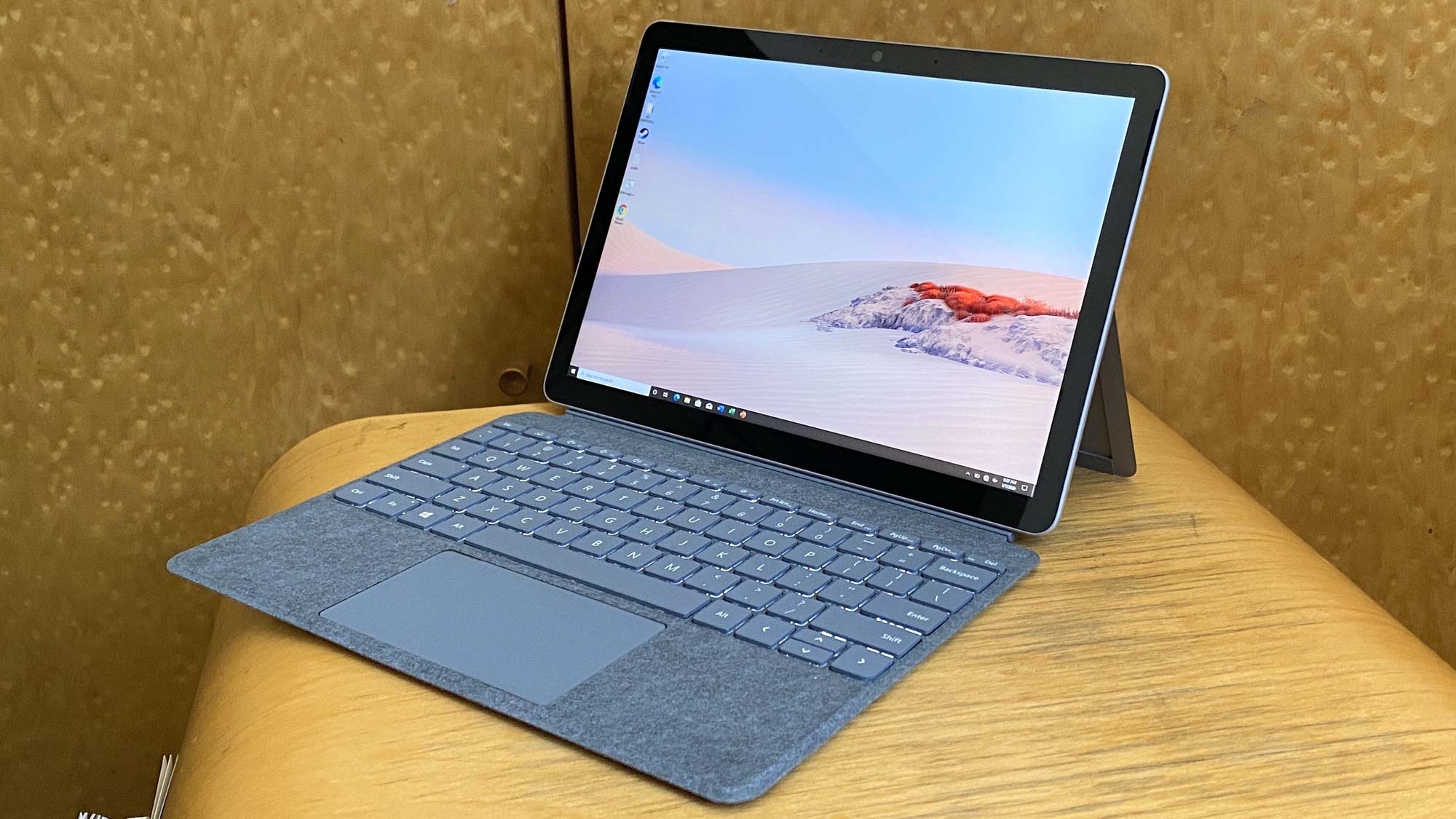
Sometimes, it takes a second try to make a thing go right. The Surface Go 2 takes aim at all the flaws of the predecessor and knocks them all down. First of all, thinner bezels make way for a bigger screen, arguably the most important part of a tablet. The Surface Go 2 has a 10.5-inch display, compared to 10 inches for the previous model.
The biggest upgrade is the Surface Go 2’s 11 hours and 39 minutes of battery life, which is over 5 hours longer than the original Surface Go.. Microsoft also answered my prayers for a laptop with a great webcam. The 5-megapixel 1080p camera in its top bezel is great for the era of online video calls, and its second front camera sensor adds Windows Hello biometric login.
Read our full Microsoft Surface Go 2 review.
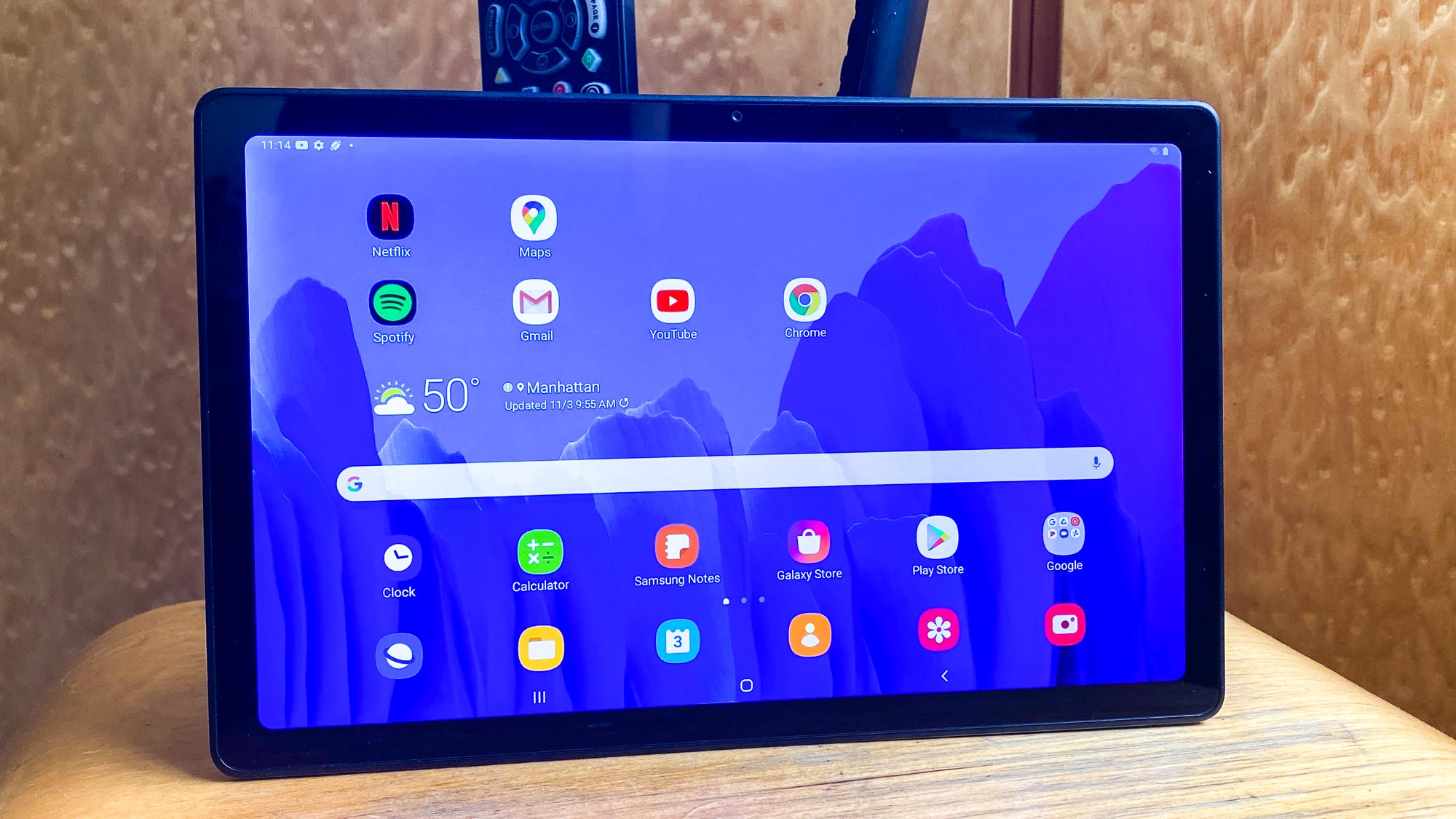
Retailing for $229 (and now often on sale for much less) the Galaxy Tab A7 is a great 10.4-inch tablet for consuming content. Whether you’re browsing the web or streaming movies, you get to focus on your content more, thanks to its super-thin bezels that are thinner than what you get with Apple’s $329 iPad. Oh, and it’s got endurance to spare, lasting 13 hours and 13 minutes on the Tom’s Guide battery test. Oh, and it’s also got an iPad Pro feature that Apple makes you pay a lot for: facial recognition to unlock the device.
And just like Apple’s pricier tablets, the Galaxy Tab A7 charges over USB-C, so you can continue to cut non-reversible microUSB cables out of your life. And while it’s not as fast as the iPad and its screen isn’t as bright, neither is a serious problem at this price. Especially when Samsung gives you true Android with the Google Play app store, and not the watered-down Amazon Fire tablet experience.
Read our full Samsung Galaxy Tab A7 review.
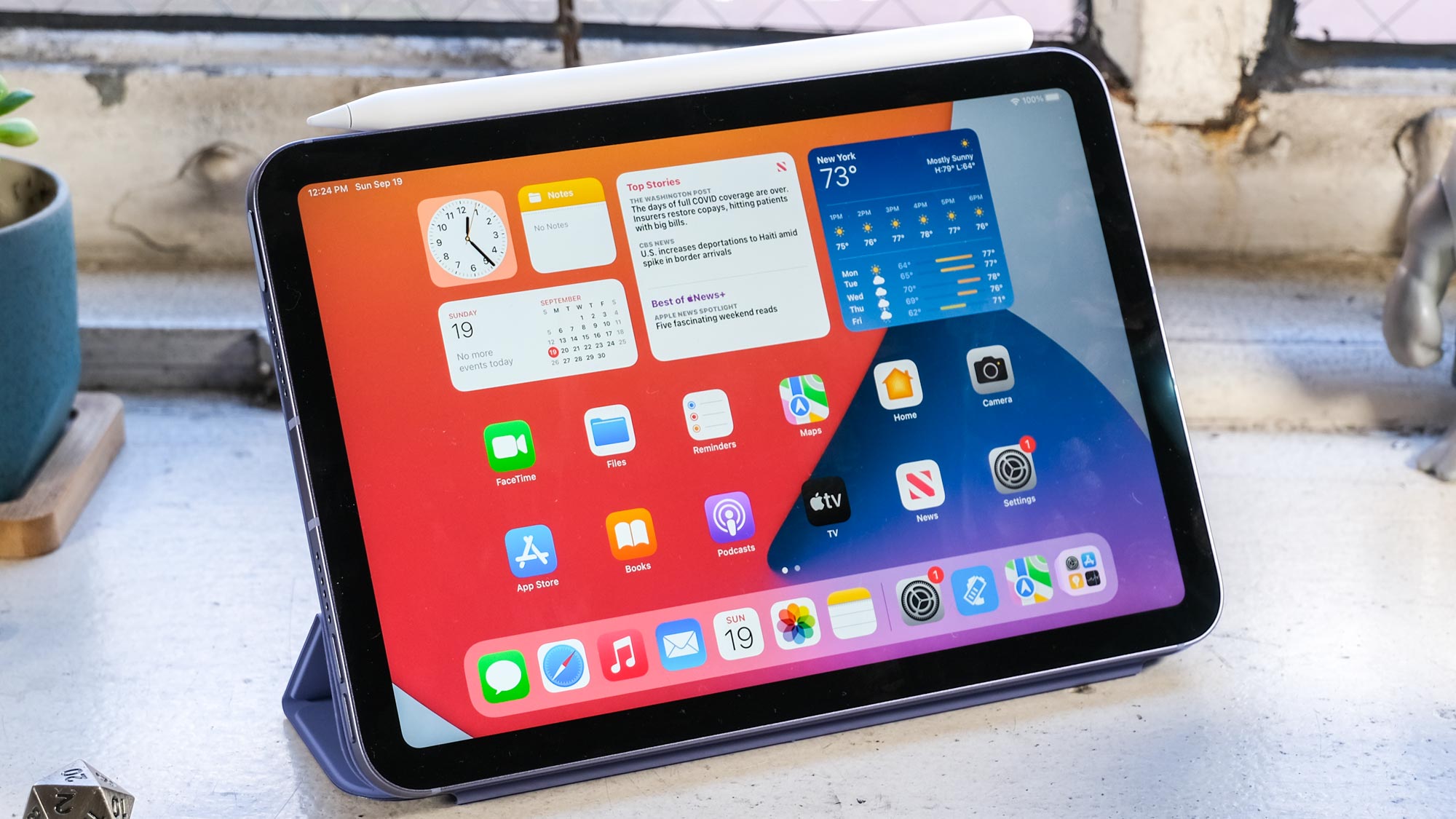
Take almost everything we know and love about the iPad Air, but shrink it down to a size and weight that’s super-easy to use with just one hand and you have the $499 iPad mini 6 (2021), which may be the iPad you’ve been waiting for. It has the Apple Pencil 2 support with the flat-edged design, the much-smaller bezels and nearly everything else we love about an iPad. Currently, Amazon has the market cornered on sub-10-inch tablets with the pricing of its Fire slates, but the new iPad mini gives quality-focused folks an alternative worth investing in.
On top of that, you’ve got the super-fast A15 Bionic under the hood. Its display is also super bright (over 500 nits of brightness), plus surprisingly good sound for a device this small. Oh, and speaking of outperforming its size, the iPad mini 6 has terrific battery life. The only thing that isn’t small about the iPad mini 6? Its $499 price tag is a bit higher than the normal iPad, but if you can afford it it’s a great little pint-sized tablet.
Read our full Apple iPad mini 6 (2021) review.
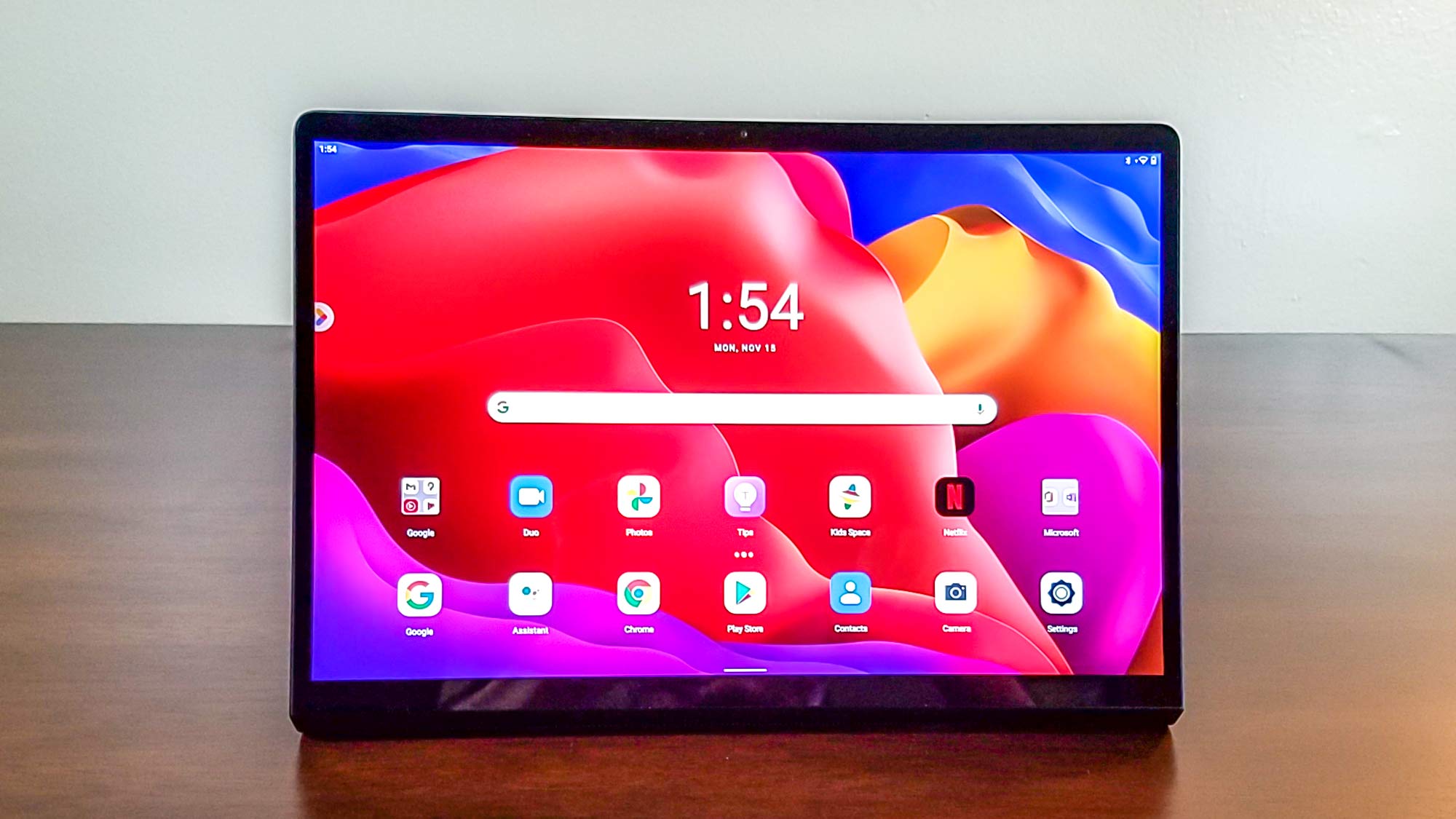
The Lenovo Yoga Tab 13 is an entertainment-focused Android tablet with an impressive 13-inch display and quality speakers that can make you feel like you’re watching movies and shows on a proper TV, instead of a bulky tablet. Playing games is a delight too, thanks to the speedy Snapdragon 870 processor and 8GB of memory. The slate can even act as a secondary monitor for your laptop or tablet, giving its 2K screen a bit of extra versatility.
Though great at what it does, it’s not the most portable device out there. It’s also all but impossible to find a protective cover due to its unusual design. The lack of 5G support is also a letdown, as is the lack of a headphone jack. Still, if you’re looking for an entertainment-focused tablet that you don’t plan to cart around much, the Yoga Tab 13 is a good choice.
Read our full Lenovo Yoga Tab review.
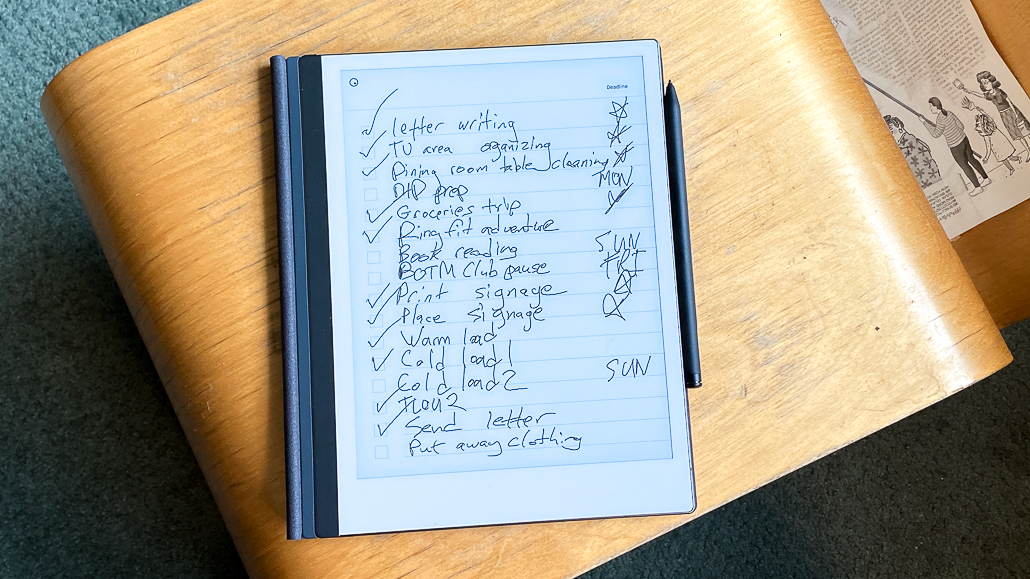
If you’re a writer, who loves pen and paper, you know that the iPad and its Apple Pencil don’t really feel right. That’s where the reMarkable tablets have jumped into the fray, offering a real-feeling writing experience, with a unique screen technology that uses digital paper and the Marker stylus, which feels more authentic when you press its nib against the screen. The reMarkable 2 ($299 to start) is a much more seductive device, now measuring a sleek 0.2 inches and ditching its plastic frame for a sleeker metallic chassis.
Oh, and it’s not just a notebook. Your documents sync to the cloud so you can read them on iPhones, iPads, PCs, Macs and Android. The reMarkable 2 also translates your handwriting to editable text, so you can share your notes with your whole team, or turn your draft ideas into a manuscript. And its two weeks of battery life means you can just leave it on your coffee table, for when inspiration strikes, rather than keep it plugged in all the time.
Read our full reMarkable 2 review.
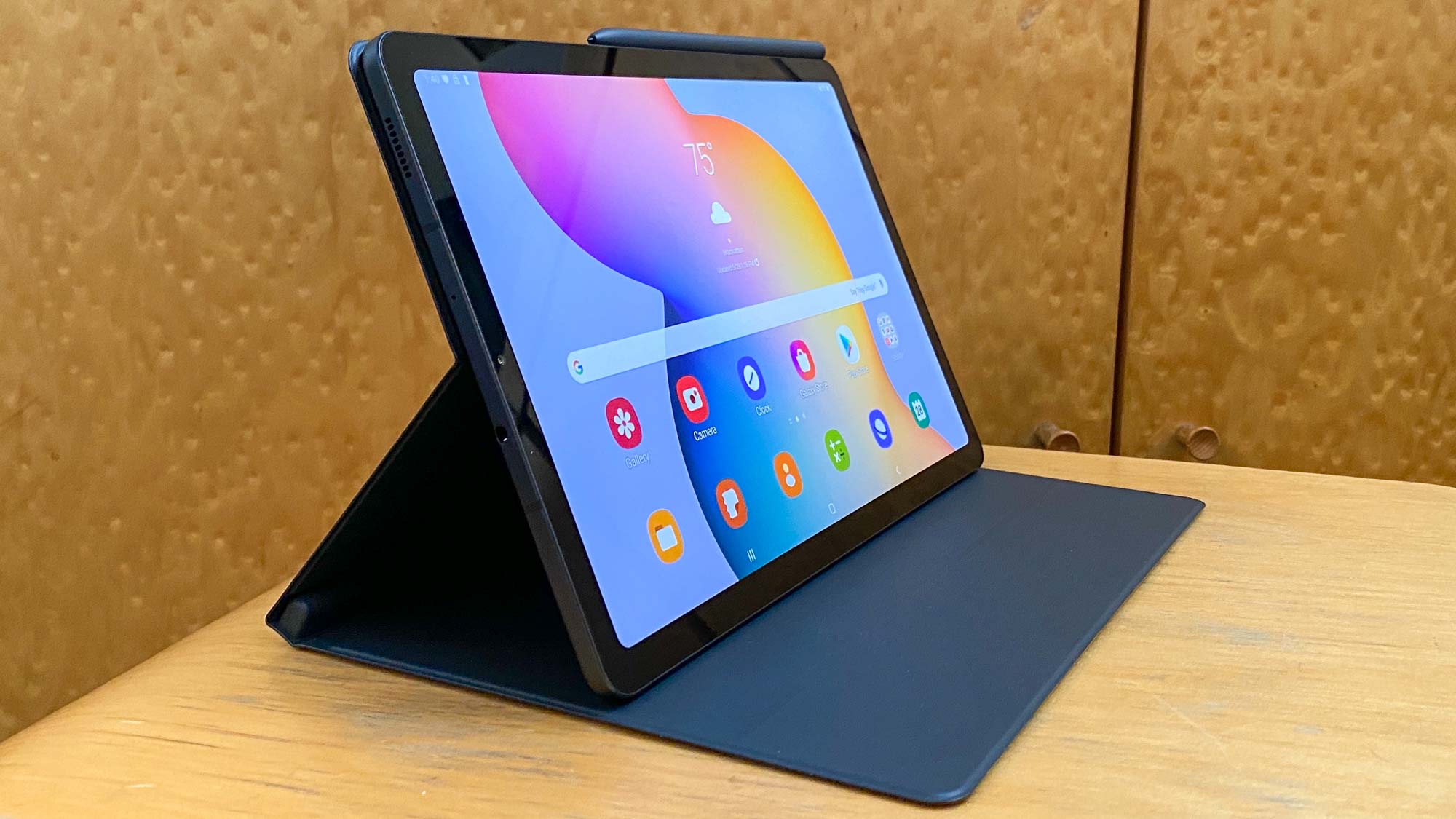
Though its not Samsung’s newest slate, this excellent tablet has a ton of battery life — lasting over 12 hours on a single charge — and offers a sleek design with a bright screen and solid sound. This all ties together for a tablet that’s great for consuming content on. Plus, the Galaxy Tab S6 Lite’s thin bezels help it stand out from the mid-range tablet crowd even further, making it look more like the iPad Pro than the iPad. Oh, and the S-Pen stylus, which offers low-latency drawing, is included by default, and it snaps to the top of the Tab S6 Lite, so you’re less likely to lose it.
Performance-wise, though, the Tab S6 Lite won’t be blowing people away if they try to multitask. Still, it’s a great Android tablet for not a lot of money.
Read our full Samsung Galaxy Tab S6 Lite review.
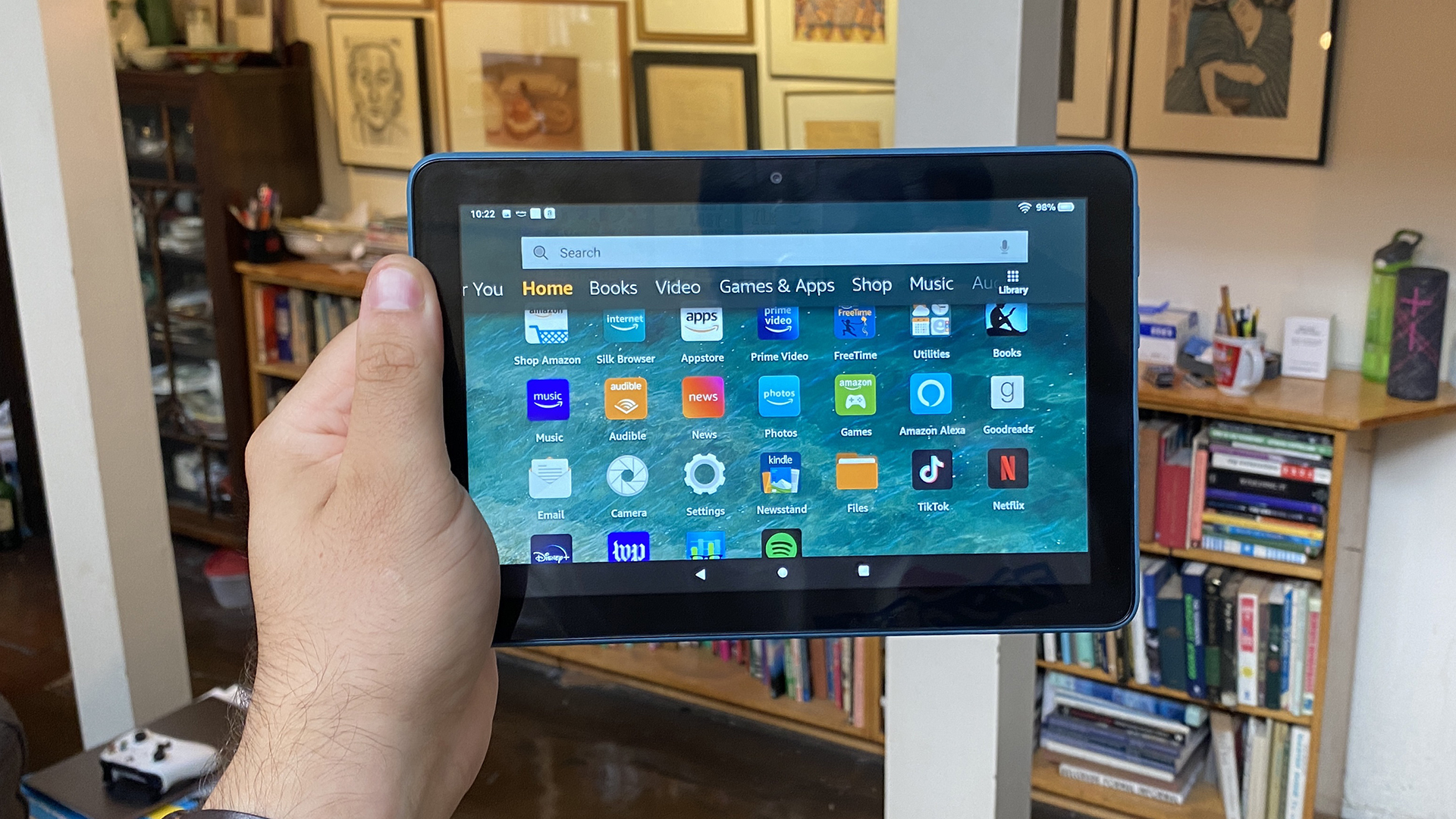
The Amazon Fire HD 8 is a great tablet for certain needs. Its bright screen and epic 13+ hours of battery life make it great for consuming content, and its reversible USB-C port is a feature we wish was in the cheaper Fire 7 tablet. On top of that, this $90 tablet is good enough at everything else — decent audio, OK performance — for its price that I can’t deny how many will find it a great value. I also found its front camera surprisingly crisp when I snapped some selfies while writing the review, as more expensive laptops have much worse webcams.
That being said, anyone who wants the completeness of the Google Play Android app store or the iPad’s iOS app store might feel a little ticked off at Amazon. The lack of Google’s own apps, which you need to sideload to use, is frustrating to folks who don’t like to use inferior web-based versions of those apps.
Read our full Amazon Fire HD 8 review.
How to choose the best tablet under $500 for you
Start by thinking about the operating system you live in, which means opening your pocket and thinking about how much you rely on your smartphone. iPhone owners may jump straight to the iPad or iPad mini, and they’d be right to do so — iMessage integration and the shared app ecosystems across iOS and iPadOS are an ideal combination.
Android folks have a wider set of options, but since Android apps aren’t thriving on tablets as much as anyone would hope, this is a good time to consider all of your options. Yes the Galaxy Tab S8 has a fantastic screen and Android apps, but isn’t Windows 10 a more capable platform? If you’re nodding your head “yes,” then the Surface Go 2 is the best tablet for you. That all being said, if you’ve got a big enough family, and you’re all living in the Amazon Prime ecosystem, go for the Fire 7 if you’re trying to fit to a tight budget (or just need a cheap tablet for the kids to use), and the Fire HD 10 if you want a bit more power and a nicer screen.
How we test tablets
First, we run as many benchmarks as that tablet will allow, to see how fast they are in ways that can be compared directly against competitors. We say “will allow” as some tablets, like Amazon’s Fire slates, have trouble with side-loaded Android apps. We then use colorimeters and light meters to measure how colorful and bright these tablets’ screens can get. After that, we put them through our in-house battery test, which times how long it takes — while surfing the web with brightness at 150 nits — to drain a tablet of a charge.
After that, we do the same things you do — browse the web, watch YouTube, play games, compose emails — and then a lot more. We try and write some (or all) of our tablet reviews on the tablets we’re testing, if there’s a keyboard for it that is. Nobody wants to write a magnum opus on a glass screen, trust me.
For more information, check out our how we test page for Tom’s Guide.
For all the latest Technology News Click Here
For the latest news and updates, follow us on Google News.
